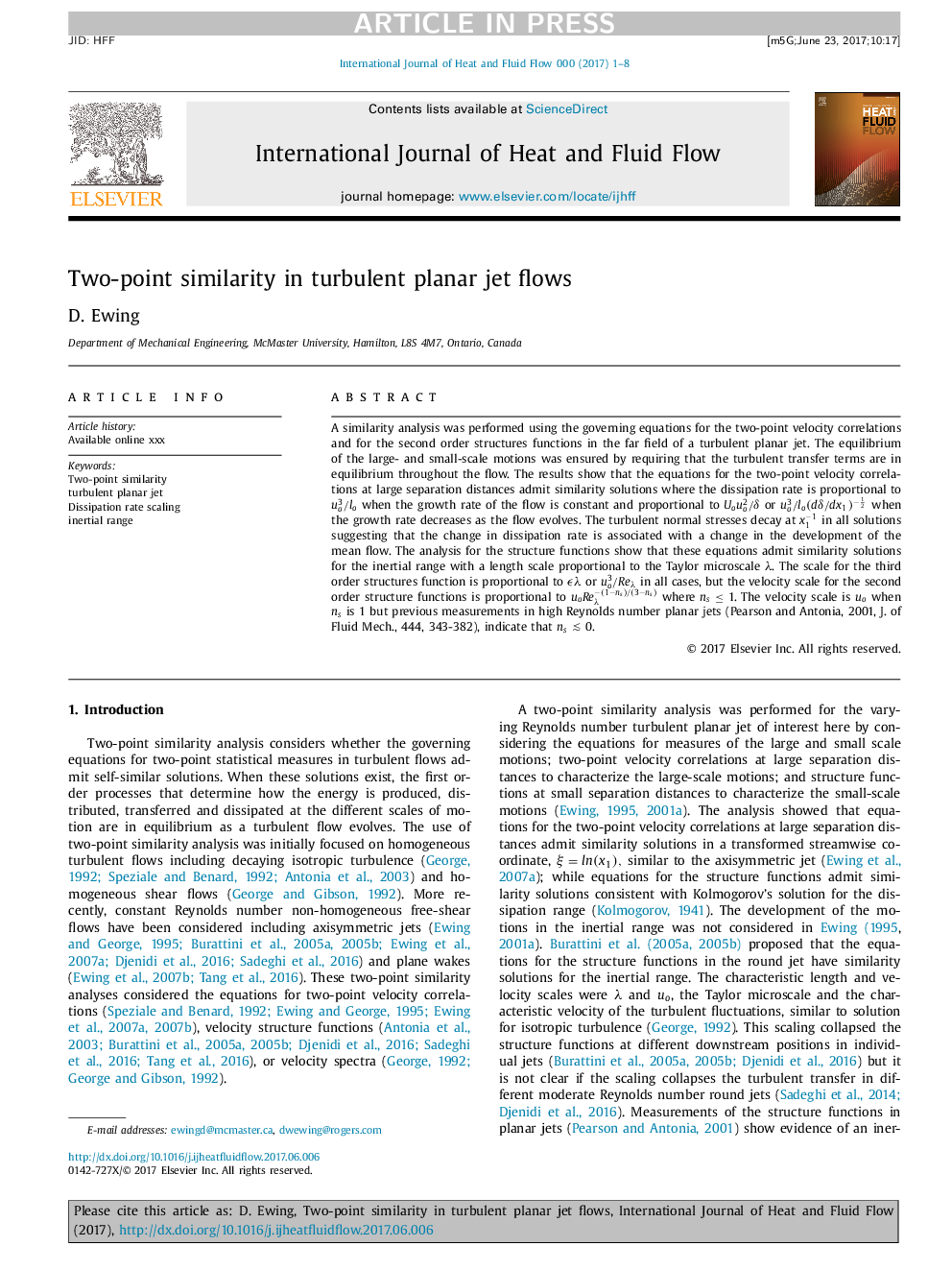| Article ID | Journal | Published Year | Pages | File Type |
|---|---|---|---|---|
| 7053582 | International Journal of Heat and Fluid Flow | 2017 | 8 Pages |
Abstract
A similarity analysis was performed using the governing equations for the two-point velocity correlations and for the second order structures functions in the far field of a turbulent planar jet. The equilibrium of the large- and small-scale motions was ensured by requiring that the turbulent transfer terms are in equilibrium throughout the flow. The results show that the equations for the two-point velocity correlations at large separation distances admit similarity solutions where the dissipation rate is proportional to uo3/lo when the growth rate of the flow is constant and proportional to Uouo2/δ or uo3/lo(dδ/dx1)â12 when the growth rate decreases as the flow evolves. The turbulent normal stresses decay at x1â1 in all solutions suggesting that the change in dissipation rate is associated with a change in the development of the mean flow. The analysis for the structure functions show that these equations admit similarity solutions for the inertial range with a length scale proportional to the Taylor microscale λ. The scale for the third order structures function is proportional to ϵλ or uo3/Reλ in all cases, but the velocity scale for the second order structure functions is proportional to uoReλâ(1âns)/(3âns) where ns ⤠1. The velocity scale is uo when ns is 1 but previous measurements in high Reynolds number planar jets (Pearson and Antonia, 2001, J. of Fluid Mech., 444, 343-382), indicate that ns â² 0.
Keywords
Related Topics
Physical Sciences and Engineering
Chemical Engineering
Fluid Flow and Transfer Processes
Authors
D. Ewing,
